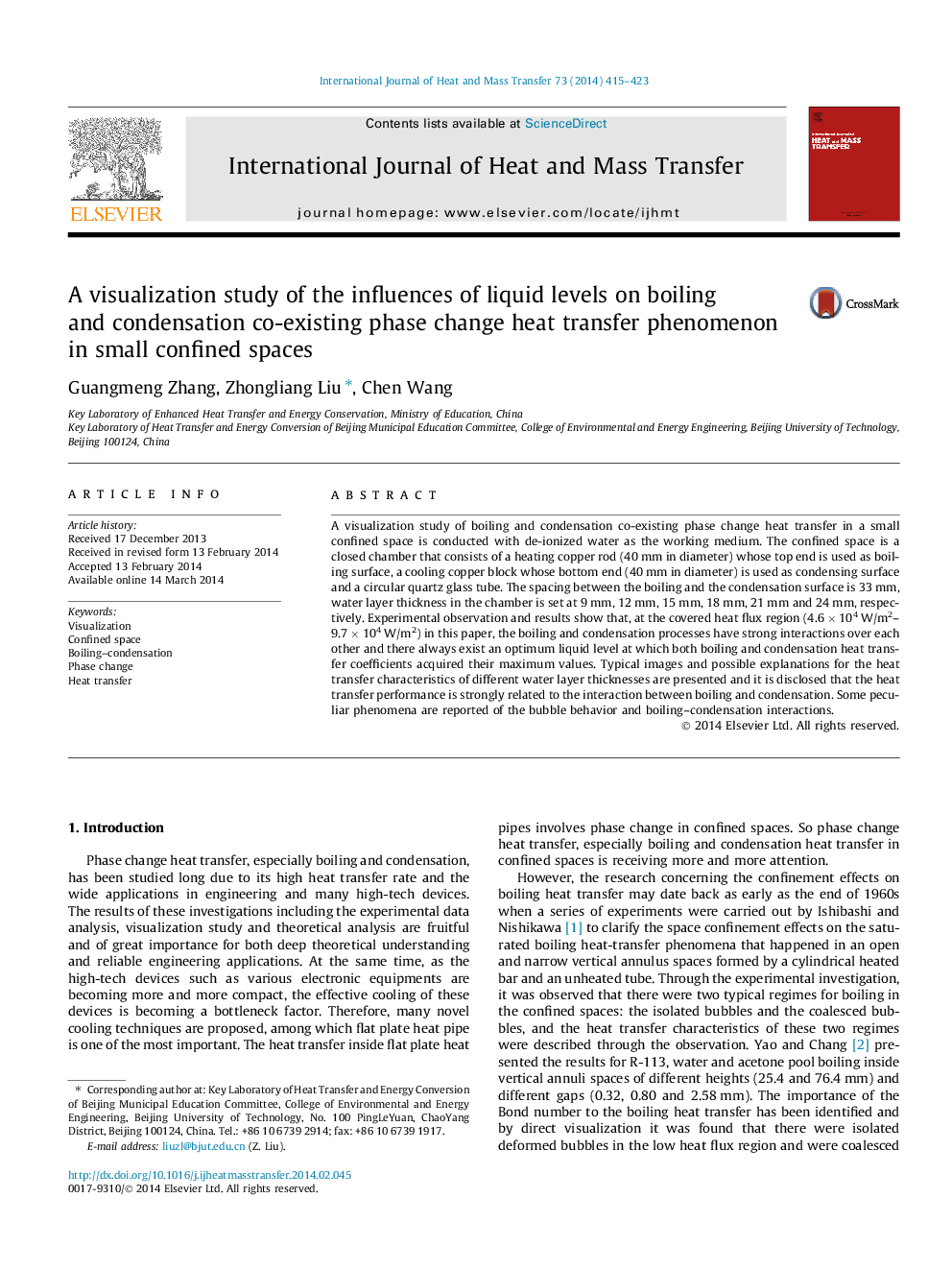| Article ID | Journal | Published Year | Pages | File Type |
|---|---|---|---|---|
| 657524 | International Journal of Heat and Mass Transfer | 2014 | 9 Pages |
A visualization study of boiling and condensation co-existing phase change heat transfer in a small confined space is conducted with de-ionized water as the working medium. The confined space is a closed chamber that consists of a heating copper rod (40 mm in diameter) whose top end is used as boiling surface, a cooling copper block whose bottom end (40 mm in diameter) is used as condensing surface and a circular quartz glass tube. The spacing between the boiling and the condensation surface is 33 mm, water layer thickness in the chamber is set at 9 mm, 12 mm, 15 mm, 18 mm, 21 mm and 24 mm, respectively. Experimental observation and results show that, at the covered heat flux region (4.6 × 104 W/m2–9.7 × 104 W/m2) in this paper, the boiling and condensation processes have strong interactions over each other and there always exist an optimum liquid level at which both boiling and condensation heat transfer coefficients acquired their maximum values. Typical images and possible explanations for the heat transfer characteristics of different water layer thicknesses are presented and it is disclosed that the heat transfer performance is strongly related to the interaction between boiling and condensation. Some peculiar phenomena are reported of the bubble behavior and boiling–condensation interactions.
